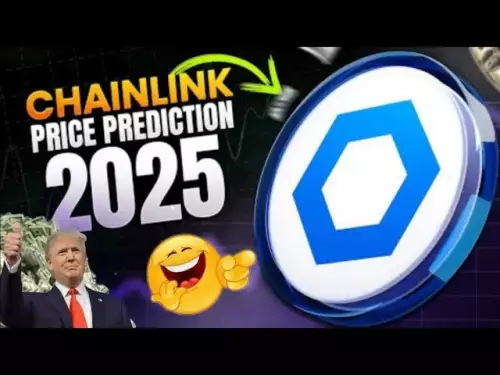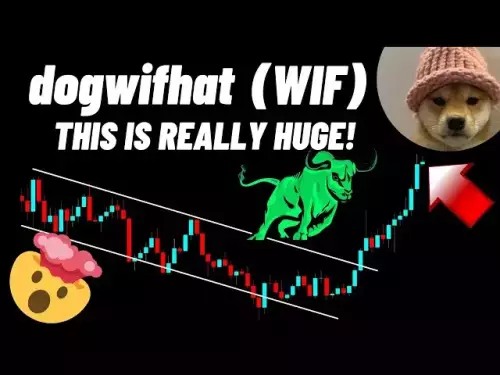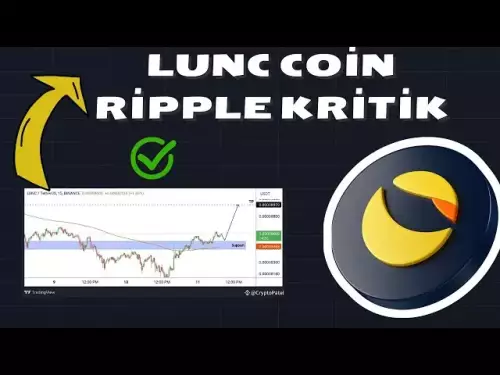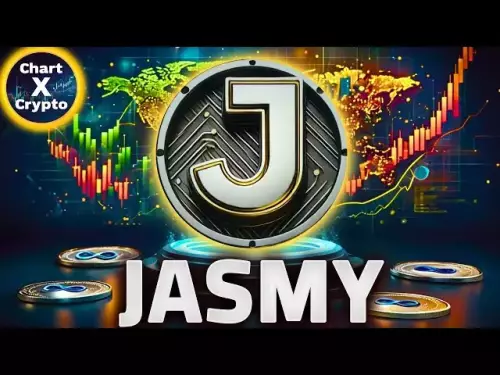-
 Bitcoin
Bitcoin $113100
1.31% -
 Ethereum
Ethereum $4577
-1.19% -
 XRP
XRP $3.011
-0.46% -
 Tether USDt
Tether USDt $1.000
0.00% -
 BNB
BNB $867.6
0.27% -
 Solana
Solana $212.2
3.64% -
 USDC
USDC $0.9999
0.01% -
 Dogecoin
Dogecoin $0.2239
0.63% -
 TRON
TRON $0.3482
-0.91% -
 Cardano
Cardano $0.8689
-0.61% -
 Chainlink
Chainlink $24.26
-1.18% -
 Hyperliquid
Hyperliquid $48.41
-4.72% -
 Sui
Sui $3.502
0.03% -
 Ethena USDe
Ethena USDe $1.001
-0.01% -
 Stellar
Stellar $0.3844
-2.01% -
 Cronos
Cronos $0.3486
60.97% -
 Bitcoin Cash
Bitcoin Cash $559.4
0.06% -
 Avalanche
Avalanche $24.79
1.10% -
 Hedera
Hedera $0.2407
-0.91% -
 UNUS SED LEO
UNUS SED LEO $9.555
0.24% -
 Litecoin
Litecoin $114.0
-1.05% -
 Toncoin
Toncoin $3.162
-0.94% -
 Shiba Inu
Shiba Inu $0.00001265
0.31% -
 Uniswap
Uniswap $10.06
-0.10% -
 Polkadot
Polkadot $3.904
-0.33% -
 Dai
Dai $0.9999
0.00% -
 Bitget Token
Bitget Token $4.657
-0.50% -
 Monero
Monero $274.1
-1.01% -
 Aave
Aave $326.8
-1.43% -
 Pepe
Pepe $0.00001019
-0.82%
How to get started with NFTs
NFTs are unique digital assets stored on blockchains, representing ownership of items like art, music, or virtual real estate.
Jul 13, 2025 at 11:14 am
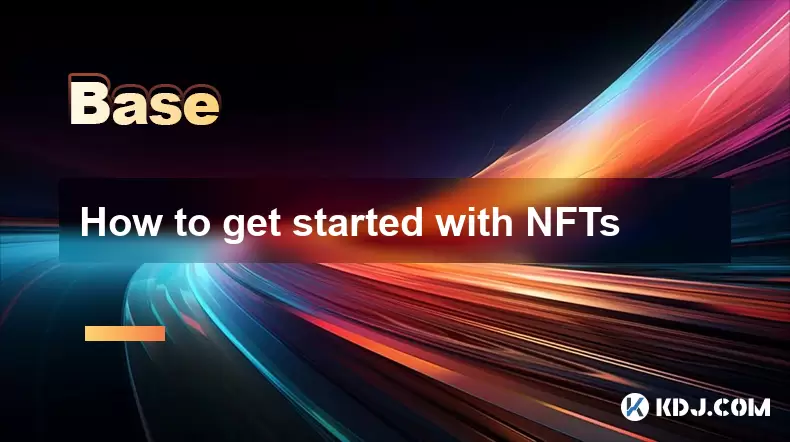
Understanding What NFTs Are
NFTs, or Non-Fungible Tokens, are unique digital assets that represent ownership of a specific item or piece of content, often stored on a blockchain. Unlike cryptocurrencies such as Bitcoin or Ethereum, which are fungible and can be exchanged one-to-one, each NFT is distinct and cannot be directly replaced by another. This uniqueness makes them ideal for representing digital art, collectibles, music, videos, and even virtual real estate.
To begin exploring NFTs, it's essential to understand the underlying technology—blockchains like Ethereum, Solana, or Binance Smart Chain—which provide the infrastructure for creating, buying, and selling these tokens. Each blockchain has its own standards for NFTs; for example, ERC-721 and ERC-1155 are commonly used on Ethereum.
Setting Up a Digital Wallet
Before you can interact with NFTs, you need a digital wallet that supports blockchain-based assets. Popular wallets include MetaMask, Trust Wallet, and Phantom. These wallets allow you to store, send, and receive cryptocurrencies and NFTs securely.
Here’s how to set up a wallet:
- Download the wallet application from the official website or app store.
- Create a new wallet and make sure to save the recovery phrase in a secure location.
- Add funds to your wallet using a cryptocurrency exchange or peer-to-peer transaction.
- Connect your wallet to NFT marketplaces like OpenSea, Rarible, or LooksRare.
Each step requires careful attention, especially when handling private keys and recovery phrases. Never share these details with anyone, as they grant full access to your wallet.
Choosing an NFT Marketplace
Once your wallet is set up and funded, the next step is selecting a marketplace where you can buy or sell NFTs. Different platforms cater to various types of NFTs and blockchains. For instance, OpenSea primarily operates on Ethereum, while Magic Eden supports Solana and Ethereum-based NFTs.
When choosing a platform, consider the following:
- The type of NFTs available (art, music, gaming items, etc.).
- Fees associated with transactions, including gas fees and service charges.
- User interface and ease of navigation.
- Security features and reputation within the community.
It's also wise to explore multiple marketplaces before committing to one. Some platforms offer exclusive drops or rare collections that may interest you.
Minting Your Own NFT
If you're an artist or creator, you might want to create and sell your own NFT. The process is known as minting, which involves converting your digital file into a blockchain-based token.
Steps to mint an NFT:
- Select a blockchain that supports NFT creation (Ethereum is most common).
- Upload your digital file (image, video, audio) to the chosen marketplace.
- Fill in metadata such as title, description, properties, and unlockable content.
- Set a price or opt for an auction format.
- Approve the transaction and pay the gas fee to complete the minting process.
Keep in mind that minting costs can vary depending on network congestion and gas prices. Always review all details before finalizing your NFT creation.
Buying and Selling NFTs
After familiarizing yourself with the basics, you can start buying or selling NFTs. When purchasing, ensure that the seller is legitimate and the NFT hasn’t been involved in any scams.
Here’s how to proceed with a purchase:
- Browse the marketplace and select an NFT you're interested in.
- Click on the 'Buy Now' or 'Place Bid' option, depending on the listing type.
- Confirm the transaction in your connected wallet, making sure to account for gas fees.
- Wait for the transaction to be confirmed on the blockchain before the NFT appears in your wallet.
Selling NFTs follows a similar process. You'll need to list your NFT at a desired price or set up an auction. Once someone purchases it, the transaction will be executed automatically through smart contracts.
Frequently Asked Questions
Q: Can I create NFTs without paying gas fees?A: Yes, some platforms offer 'lazy minting,' where the NFT isn't recorded on the blockchain until it's purchased. However, this depends on the platform and the blockchain used.
Q: Are NFTs only for digital artists?A: No, NFTs can represent a wide range of digital and physical assets, including music, domain names, virtual land, and even tweets. Anyone with digital content can explore NFT opportunities.
Q: How do I verify the authenticity of an NFT?A: Authenticity is ensured through blockchain verification. You can check the owner's address, transaction history, and creator information directly on the blockchain explorer linked to the NFT.
Q: What happens if I lose access to my wallet?A: Losing access means losing control over your NFTs permanently. Always back up your recovery phrase and consider using hardware wallets for added security.
Disclaimer:info@kdj.com
The information provided is not trading advice. kdj.com does not assume any responsibility for any investments made based on the information provided in this article. Cryptocurrencies are highly volatile and it is highly recommended that you invest with caution after thorough research!
If you believe that the content used on this website infringes your copyright, please contact us immediately (info@kdj.com) and we will delete it promptly.
- Apecoin, Arctic Pablo, and ROI: What's the Hype?
- 2025-08-28 12:45:14
- Tether, Bitcoin, and Stablecoins: Decoding the Crypto Chessboard
- 2025-08-28 13:05:12
- Mastercard, Circle, and Stablecoin Settlements: A New Era for Digital Commerce?
- 2025-08-28 10:45:14
- Algorand, XBTO, and the Art of Market Making: A New Era for ALGO?
- 2025-08-28 11:10:13
- Finastra, Circle, and USDC: Revolutionizing Cross-Border Payments, Ya Know?
- 2025-08-28 11:10:13
- Chainlink's Wild Ride: Regulatory Hope vs. Bearish Momentum – A NYC Perspective
- 2025-08-28 11:25:13
Related knowledge
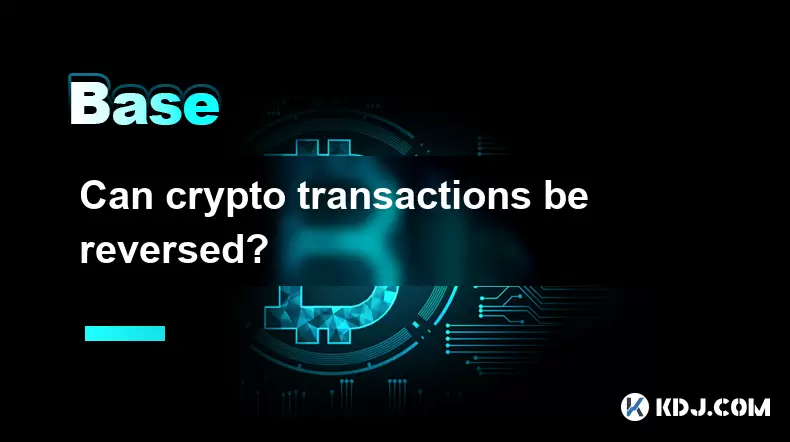
Can crypto transactions be reversed?
Aug 10,2025 at 01:35am
Understanding the Immutability of Blockchain TransactionsCryptocurrency transactions are built on blockchain technology, which is designed to be immut...
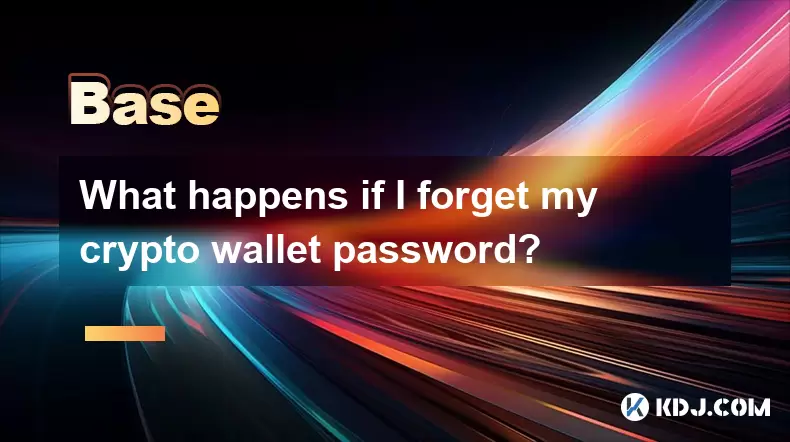
What happens if I forget my crypto wallet password?
Aug 09,2025 at 08:50am
Understanding the Role of a Crypto Wallet PasswordA crypto wallet password serves as a critical security layer that protects access to your digital as...
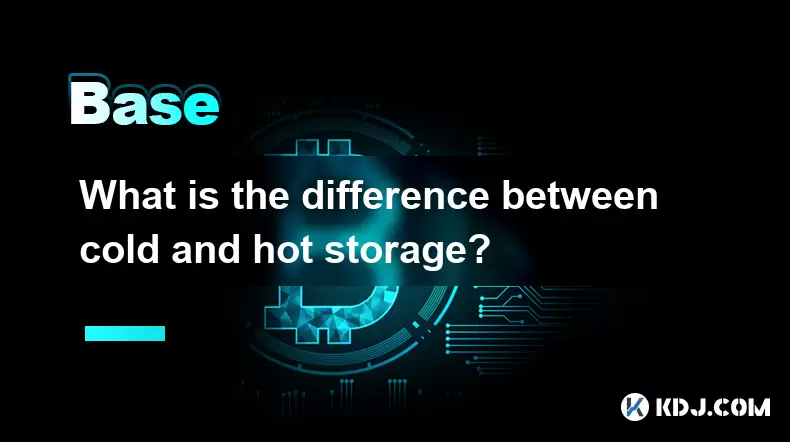
What is the difference between cold and hot storage?
Aug 12,2025 at 01:01am
Understanding Cold Storage in CryptocurrencyCold storage refers to offline methods of storing cryptocurrency private keys, ensuring they are not expos...
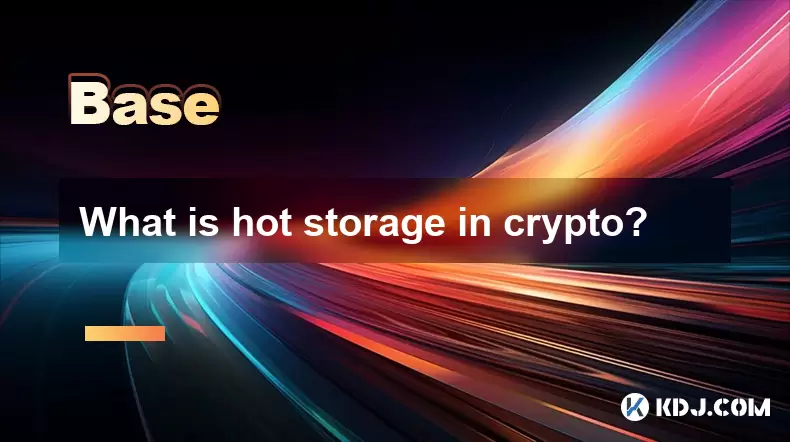
What is hot storage in crypto?
Aug 11,2025 at 07:08am
Understanding Hot Storage in CryptocurrencyHot storage refers to cryptocurrency wallets that are connected to the internet. Unlike cold storage soluti...

What is cold storage in crypto?
Aug 13,2025 at 11:35am
Understanding Cold Storage in CryptocurrencyCold storage in cryptocurrency refers to a method of storing digital assets offline, away from internet-co...

What is the best crypto portfolio tracker?
Aug 10,2025 at 05:08am
Understanding the Role of a Crypto Portfolio TrackerA crypto portfolio tracker is a digital tool designed to help investors monitor the performance of...

Can crypto transactions be reversed?
Aug 10,2025 at 01:35am
Understanding the Immutability of Blockchain TransactionsCryptocurrency transactions are built on blockchain technology, which is designed to be immut...

What happens if I forget my crypto wallet password?
Aug 09,2025 at 08:50am
Understanding the Role of a Crypto Wallet PasswordA crypto wallet password serves as a critical security layer that protects access to your digital as...

What is the difference between cold and hot storage?
Aug 12,2025 at 01:01am
Understanding Cold Storage in CryptocurrencyCold storage refers to offline methods of storing cryptocurrency private keys, ensuring they are not expos...

What is hot storage in crypto?
Aug 11,2025 at 07:08am
Understanding Hot Storage in CryptocurrencyHot storage refers to cryptocurrency wallets that are connected to the internet. Unlike cold storage soluti...

What is cold storage in crypto?
Aug 13,2025 at 11:35am
Understanding Cold Storage in CryptocurrencyCold storage in cryptocurrency refers to a method of storing digital assets offline, away from internet-co...

What is the best crypto portfolio tracker?
Aug 10,2025 at 05:08am
Understanding the Role of a Crypto Portfolio TrackerA crypto portfolio tracker is a digital tool designed to help investors monitor the performance of...
See all articles





















